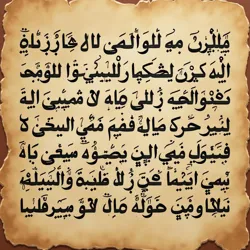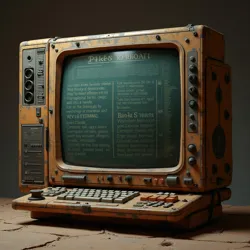Ares Creole

Traditional Ares Creole calligraphy displaying a common proverb about water conservation
Creole language
Mars (planetwide)
~4.2 billion
Developed post-Great Collapse
Mixed Earth languages with Martian innovations
Modified Latin alphabet with specialized Martian characters
Official language of the Meridian Confederacy and most Martian nations
Ares Creole is the most widely spoken language on Mars, serving as the primary means of communication across the planet's various nations and territories. Emerging in the centuries following the Great Collapse, this distinctive linguistic system combines elements from multiple Earth languages with specialized vocabulary and grammatical structures adapted to describe uniquely Martian concepts and experiences. Today, it serves as both the lingua franca of interregional trade and diplomacy and a powerful symbol of unified Martian identity.
Historical Development
Early Formation
The origins of Ares Creole can be traced to the immediate post-Collapse period, when the surviving Mars colonies found themselves increasingly isolated from Earth. The initial colonists, drawn from various nations and linguistic backgrounds, needed to communicate effectively about their new environment and challenges. The Atmosphere Wardens played a crucial role in this development, as their technical vocabulary for describing atmospheric conditions and maintenance procedures became standardized across different settlements.
Standardization Period
 A preserved terminal from New Alexandria showing early standardization efforts for Ares Creole technical terminology
A preserved terminal from New Alexandria showing early standardization efforts for Ares Creole technical terminologyDuring the Standardization Period (approximately 500-800 A.M.), the Universities of Olympus led efforts to formalize Ares Creole's structure and vocabulary. This process was driven by the practical need to preserve and transmit technical knowledge across generations, particularly regarding crucial survival technologies. The resulting standardized form incorporated specialized terms for Martian phenomena, environmental conditions, and technological systems that had no Earth equivalents.
Linguistic Features
Grammar and Structure
Ares Creole's grammar reflects its hybrid origins while incorporating unique features suited to Martian life. The language employs a simplified tense system compared to Earth languages, but has developed elaborate aspects for describing environmental conditions and resource states. The Sphaerix Framework, a grammatical innovation unique to Ares Creole, allows speakers to precisely communicate complex information about atmospheric conditions, water availability, and technical systems status through subtle verbal modifications.
Vocabulary Evolution
The vocabulary of Ares Creole draws from multiple Earth language families but has evolved to address distinctly Martian concerns. Technical terminology often preserves elements of Earth languages, particularly in areas related to essential survival systems. However, new compound words and concepts have emerged to describe uniquely Martian phenomena, such as the complex terminology surrounding the Calendar of Two Moons and atmospheric maintenance procedures.
Regional Variations
Dialectal Differences
While standardized Ares Creole serves as the official language of interregional communication, distinct regional dialects have evolved within different Martian nations. The dialect of the Frost Kingdoms incorporates specialized vocabulary for describing ice and cold-weather phenomena, while the Meridian Confederacy's variant maintains a more extensive technical vocabulary related to atmospheric processing and water management.
Social and Cultural Impact
The evolution of these regional dialects reflects both practical adaptations to different environmental conditions and the development of distinct cultural identities among Martian nations. The Guild of Linguistic Preservation works to document these variations while maintaining mutual intelligibility across regions.
Written Form
Script Development
The written form of Ares Creole uses a modified Latin alphabet supplemented with additional characters for representing uniquely Martian concepts. The most significant addition is the set of "atmospheric markers," specialized diacritical marks that indicate environmental context for technical and scientific terms.
Digital Adaptation
Modern digital systems support these specialized characters through the Martian Unicode Standard, developed by the Chronicians of Olympus to ensure accurate preservation and transmission of technical and historical documents. This standardization has been crucial for maintaining consistent communication across different Martian nations and technical systems.
Cultural Significance
Identity and Unity
Ares Creole serves as more than just a means of communication; it has become a fundamental element of pan-Martian identity. Its unique vocabulary and structures reflect the shared experiences and challenges of Martian life, while its widespread use facilitates cooperation and cultural exchange between different regions and nations.
Literary Traditions
The language has developed rich literary traditions, particularly in technical writing and environmental poetry. The Valles Marineris Literary Circle has been instrumental in developing new forms of expression that capture the unique experiences of Martian life, including the celebrated "atmospheric verses" that describe the complex interplay between human civilization and Mars' engineered environment.
Educational Role
Technical Training
Ares Creole plays a crucial role in technical education and knowledge preservation across Mars. Its specialized vocabulary and grammatical structures make it particularly well-suited for transmitting complex technical information about vital systems maintenance and environmental management.
Cultural Transmission
The language serves as a vehicle for preserving and transmitting cultural memory, including both technical knowledge and historical narratives about Earth and the Great Collapse. Educational institutions across Mars use standardized Ares Creole in their curricula, ensuring consistent transmission of crucial survival knowledge while maintaining cultural continuity.
Modern Usage
Official Communications
All major Martian political entities conduct their official business in Ares Creole, with the Guild of Resource Allocation maintaining standardized terminology for resource management and trade agreements. This common linguistic framework has been crucial for maintaining peaceful relations and efficient resource distribution among Martian nations.
Future Evolution
The language continues to evolve, particularly in response to technological rediscoveries and changing environmental conditions. Recent archaeological findings from the Olympus Archives have led to the incorporation of recovered technical terminology, while new environmental challenges prompt ongoing linguistic innovations.
See Also
- Calendar of Two Moons
- Great Collapse
- Chronicians of Olympus
- Guild of Resource Allocation
- Atmospheric Sciences Guild